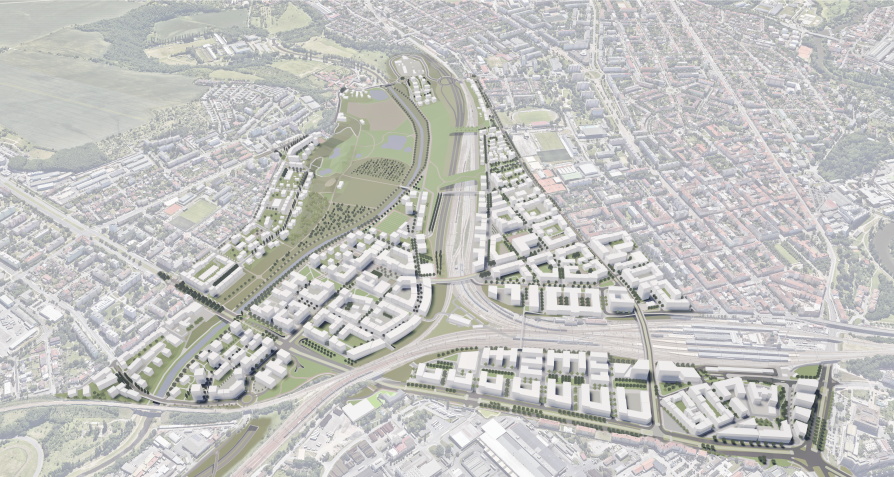Final projects

"UNLOCKING URBAN POTENTIAL: BARRIER REMOVAL AND CONNECTIVITY IN PILSEN"
Architecture and Urbanism, MA diploma project

Annotation
The urban environment is a dynamic entity that is constantly evolving and adapting to the needs of its inhabitants and the challenges they create. However, the presence of various barriers in cities - whether physical, social, economic, or environmental - can significantly hinder this development, leading to fragmentation of the urban landscape and segregation of communities. This present paper addresses the topic of breaking them down and aims to explore how urban design can effectively eliminate these barriers or at least mitigate their effects in order to increase the connectivity, inclusiveness, and overall resilience of cities. Physical barriers such as motorways, railways, and large industrial estates often disrupt the spatial continuity of urban areas, creating isolated areas that lack accessibility and integration with the wider city. These barriers not only hinder the movement of people and goods, at least on a small scale, but also contribute to social fragmentation by reinforcing socio-economic disparities. Similarly, social barriers, including economic inequality, racial segregation, and cultural differences, can perpetuate exclusion and marginalization and limit the opportunities for some groups to participate fully in urban life. This paper, however, focuses only on physical barriers, as they themselves provide a sufficiently broad topic. Addressing urban barriers has the potential to create more cohesive and resilient urban spaces. By examining successful case studies and using technologies such as GIS and digital modelling, this thesis seeks to develop innovative least in the Czech context design approaches that can be applied in real-world settings. The main focus will be on sustainable and resilient design approaches that ensure that the interventions put forward not only address current problems but also anticipate future needs and environmental changes. A key component of this work is a comprehensive analysis of a specific urban area where barriers significantly affect the connectivity and cohesion of the urban fabric. Through analysis, the project identifies the root causes of these barriers and proposes conceptual strategies to overcome them. In conclusion, this work sets the stage for a detailed exploration of how urban design can break down barriers and foster more integrated and inclusive cities. It aims to contribute to the broader discourse on connectivity and sustainability in cities and to offer practical insights and design guidelines that can be applied in different urban contexts. Through a combination of theoretical research and practical exploration of place-specific urbanism, this thesis aims to demonstrate the transformative potential of thoughtful urban design in overcoming the challenges posed by urban barriers.
